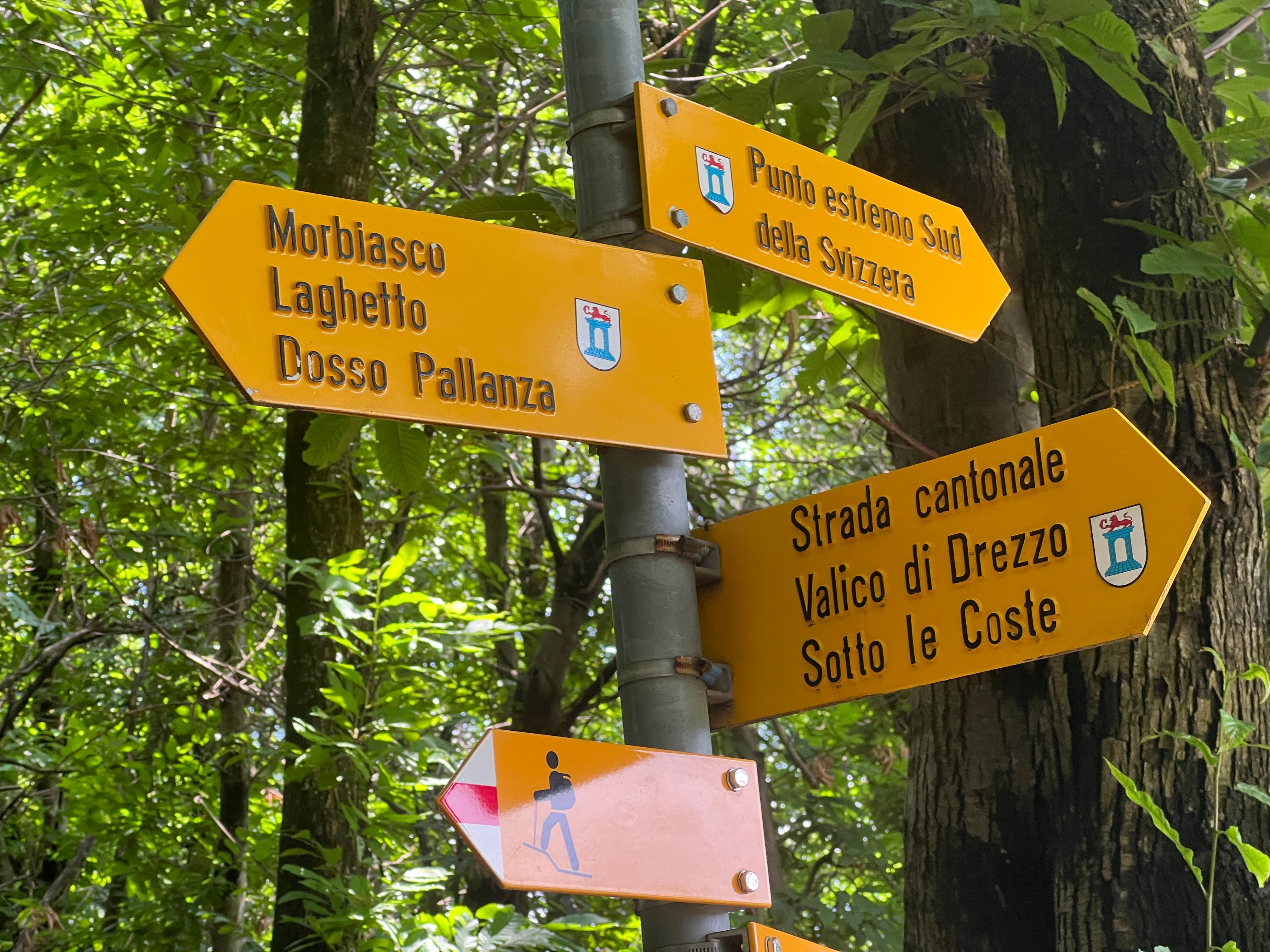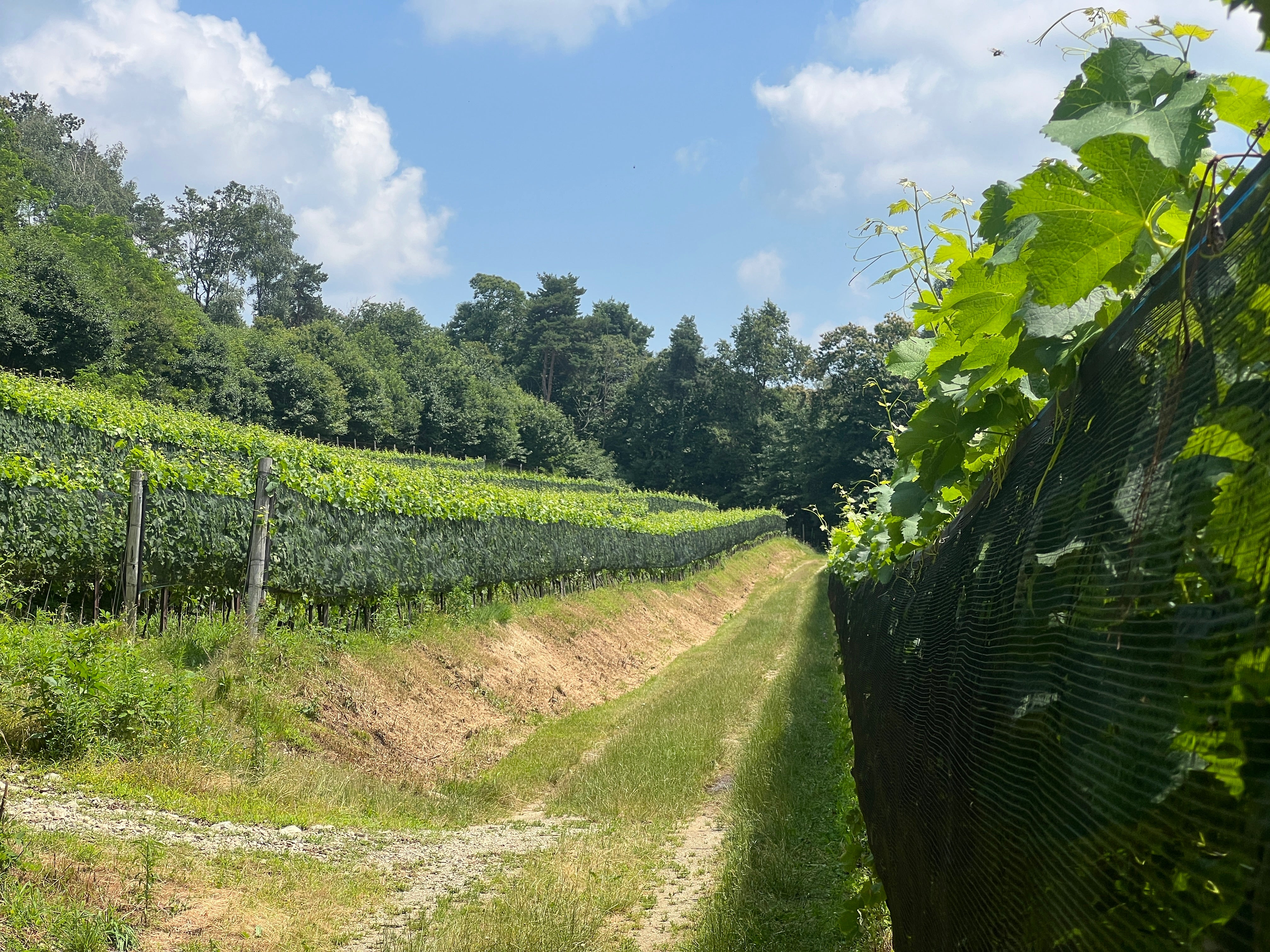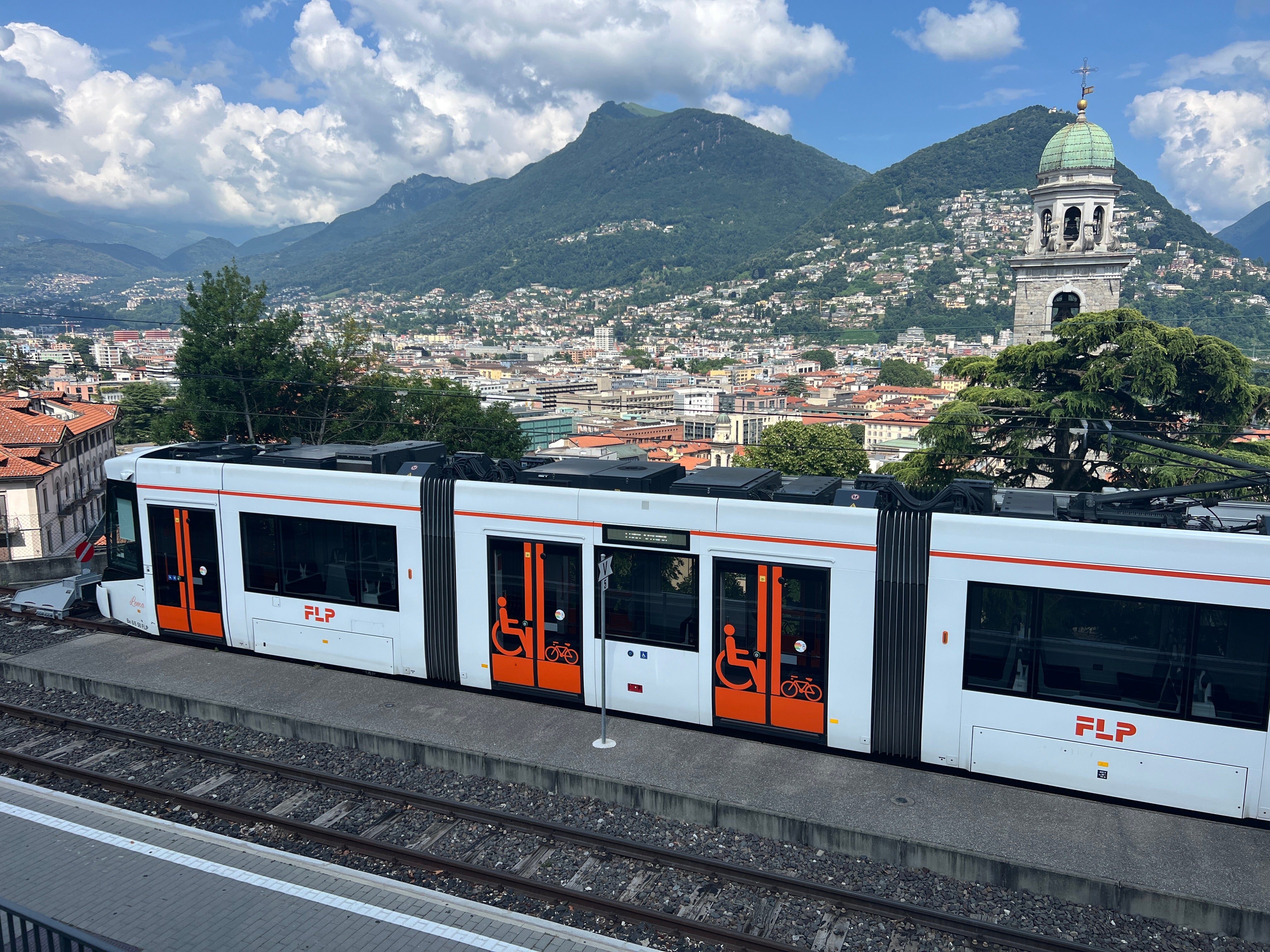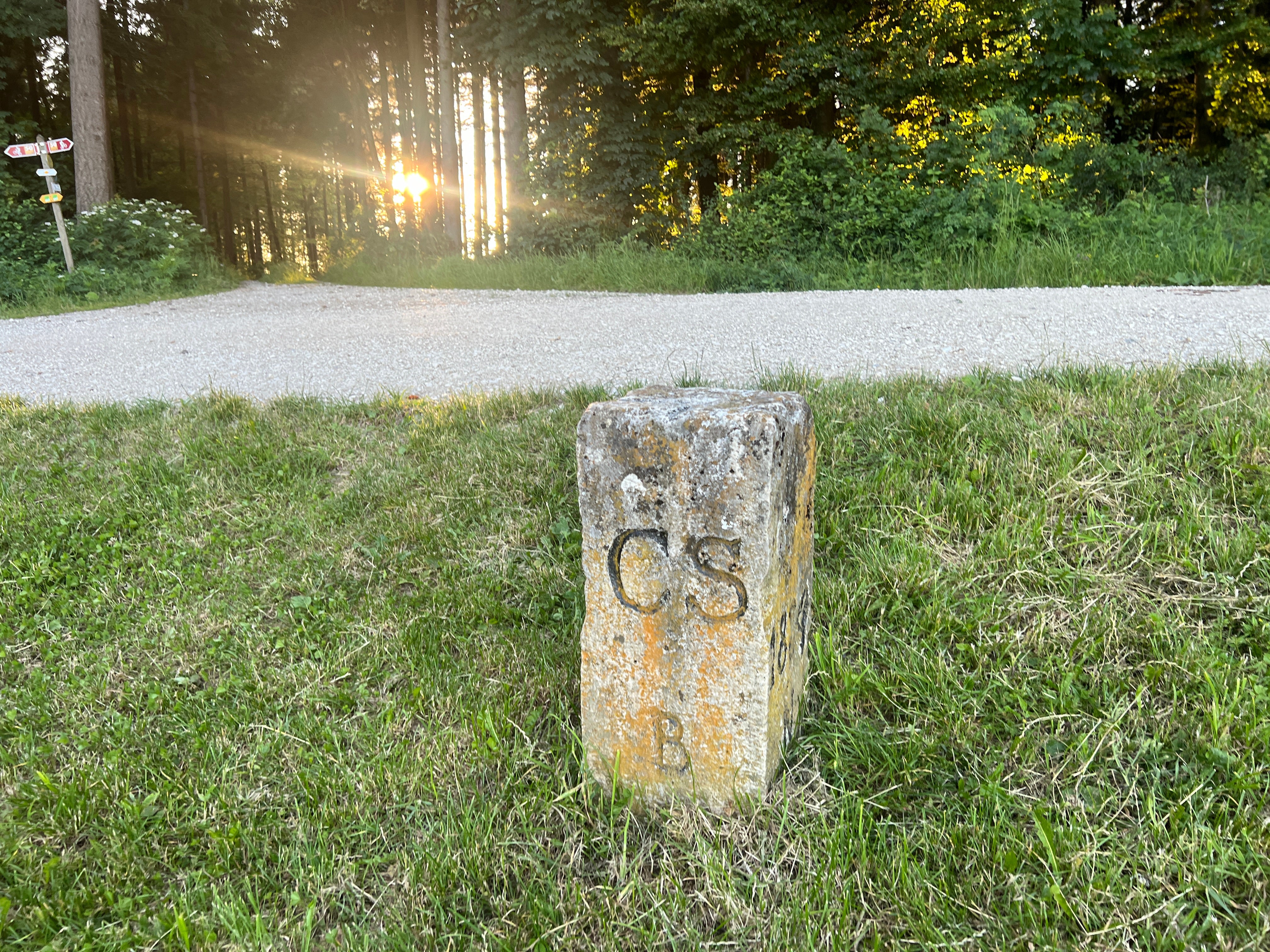Europe’s perfect one-day journey? After travelling through one country and two degrees of latitude, I think I can name it.
The trip connects Switzerland’s southernmost and northernmost points – each a spectacular location in its own right – on public transport. You glide through generous Alpine scenery on the way. And, if you apply rather more planning than I did, you can cover the distance for a reasonable fare.
To find the deepest south point in Switzerland, begin in Italy: ideally, Como, the pretty city anchoring the most achingly beautiful Italian lake, and a wonderful place to wake up. One of the frequent trains will take you in just six minutes northwest to Chiasso in Switzerland.
As soon as you reach the new nation, leave it again. Pass the curious sculpture of two naked women peering towards the platform, and turn right out of the station along the old international highway. Now a quiet byway, it leads to and beyond the unused infrastructure of a pre-Schengen Area border post.
Briefly back in Italy, pause for a last reasonably priced coffee at the Caffè La Pesa on the corner, then continue for a couple of blocks in search of paradise.
A small sign on the right points you along an alley towards the foot of a heavenly stairway. The Scalinata del Paradiso comprises more than 900 stone-cut steps, lifting you from a humdrum street in northern Italy through forest so deep the sunlight struggles to break through. I spent 45 breathless minutes ascending to a plateau where the trees begin to thin.

Read more: The splendour along Lake Geneva as Montreux Jazz Festival plays
The fact you are on the border becomes clear when you start seeing stones announcing “S 1921”, with the inscription facing into Switzerland.
You will need either a high-order map plus an unerring sense of location, or (as in my case) a smartphone to identify exactly where you are and the wooded paths to your target: Punto extreme sud della Svizzera.
You can’t miss it: not because of the elegantly carved wooden sculpture of a woman with a Swiss shield and spear, defending the motherland – but a cartoon character of a woman wearing a big hat and a green top beside an orange banner. Fortunately a more inspiring sight awaits: highland Italy unfolding beneath you, with vineyards punctuated by terracotta roofs and hills crumbling into the southern haze.
No time to lose: a passing retired Swiss schoolteacher (always a valuably ally) named Albert told me he walks in the deep south of his nation every day. He guided me through vines heaving with fruit to a road that offered the fastest route down the hill to Chiasso station. A bus was promised, but before it could arrive I hitched a ride with a Swiss-Russian named Tatiana, whose Mercedes swooped down to the rail hub.

Read more: Could this ‘dull’ Swiss city become Europe’s queer capital?
FFS. The acronym stands for Ferrovie federali svizzere – Swiss Federal Railways – but also for a vulgar expression of the kind one might utter when confronted with the reality of a trans-Switzerland train fare. The distance was 120 miles, for which the helpful young assistant explained that there really was no alternative to paying £88 – except to buy a Swiss Half Fare Travelcard for an additional £171, whereupon the price would plummet to (you’re ahead of me) £44. With a bit of pre-planning, I could have bought a Saver Day Pass for a more reasonable £55, but they are not available on the day.
I handed over my credit card with a thin smile. But my grin broadened as soon as the train departed. The first stretch threaded through Alpine foothills to the city of Lugano, where I was to change from a local service to an Inter City Express. The balletic precision of Swiss trains means I could confidently exit the station and take in the view of churches in the foreground, peaks and valleys beyond.

Read more: Basel city guide – where to stay, eat, drink and shop in Switzerland’s Eurovision host city
A journey “through the mountains” has two different meanings here. Thanks to Europe’s longest rail underpass, the Gotthard Base Tunnel, you can bore your way through the foot of the Alps. Terrific if you really need to get from Milan to Zurich in a few hours and your attention stretches no further than your laptop. Fortunately the old route that clambers high into the Alps is still in daily service, enabling you to appreciate the mountains as you pass through on a superbly designed line – passing handsome stations that look as rock-solid as the Alps.
Fifteen minutes north of another Swiss-Italian city, Bellinzona, the train swerves right past a tin-topped church and being to perform engineering contortions. You cross a valley on a viaduct then vanishing into the solid rock of a mountainside for a tunnel that climbs and circles – so that you emerge several hundred feet higher and temporarily pointing south.
As the gradient steepens, the water on the adjacent river is effervescent as it rushes past in the opposite direction. The drivers on the parallel motorway are unlikely to be feeling so bubbly as transalpine trucks squabble for space with holiday motorists.
Here on the train, every window offers a panoramic view – though many passengers seem fixated on their phones.

implausible contortions continue up to the Gotthard Pass. Here, he engineers decided to tunnel a shortcut that takes you through to the other side – and a descent into the warmth of a Swiss summer’s afternoon.
Paragliders soared to the east, while windsurfers and swimmers left their wakes on the lake to the west.
Zurich’s main station in the rush hour brings you down to earth with a bump. But this being Switzerland, the next train – a double-decker commuter departure – is waiting. The Regional Express left a few minutes late, but then took a wide arc, wrapping around the city: close enough to apartment blocks to register just how much vegetation Swiss people like to cultivate on their balconies.
Soon, rolling central European scenery started rolling past the window on fine summer evening. To the west, dozens of miles away the foothills of the Bavarian Alps were rising. But I was focused on the far north – and a quick change at Schaffhausen station, the northernmost station in Switzerland.
The northernmost Swiss bus route was scheduled to take over. The late train meant I sprinted for the number 23 with 45 seconds to spare; had I boarded the wrong end of the train at Zurich I would have missed it.
The dozen or so people already on board had seen the views before, leaving the front seat to me to recover my breath and revel in the scenery.

Switzerland’s northernmost bus stop is in the village of Bargen. I was still seven kilometres short of the far north point. A network of footpaths could have taken me there, but as the sun was sinking I started hitching.
A German couple deposited me at the now-obsolete frontier post, where tracks led through wheatfields to a much more modest marker. A squat, square stone, inscribed “CS 1889” indicates where Switzerland gives way to Germany.
As the evening sunlight filtered through the forest, I recognised that I had no vehicle, no hotel booking and no idea how I might solve those issues. The start of an uncertain night – but the end of a perfect day.
Read more: The best ski resorts in Switzerland for your next Swiss skiing holiday
